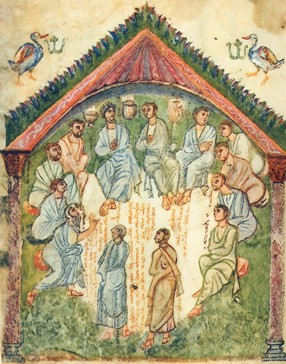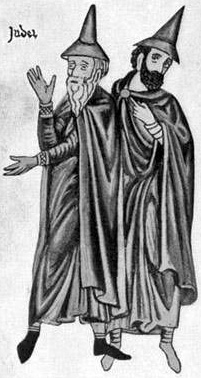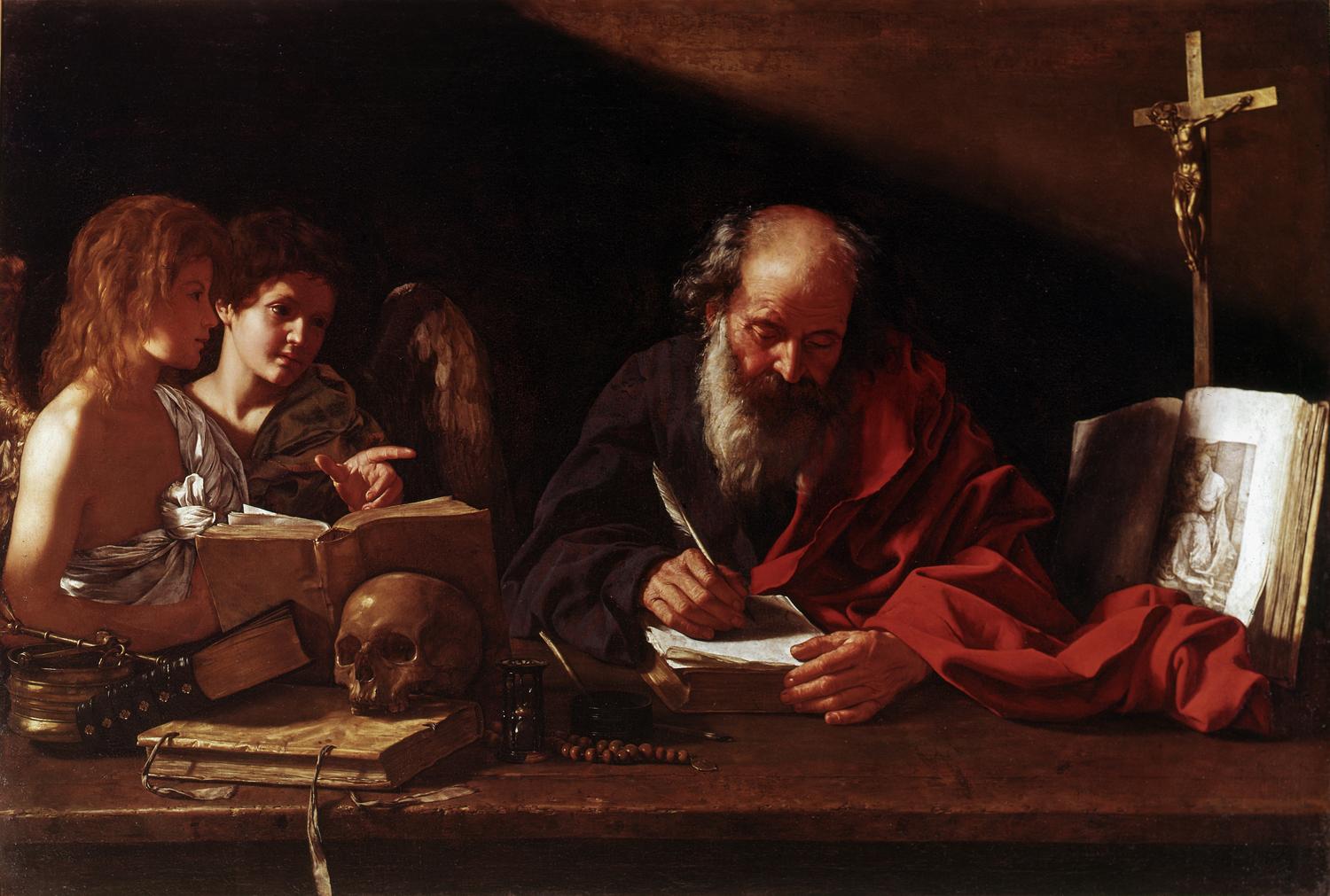|
Rabbula
Rabbula () was a bishop of Edessa from 411 to August 435 AD, noteworthy for his opposition to the views of Theodore of Mopsuestia and Nestorius. However, his successor Ibas, who was in charge of the school of Edessa, reversed the official stance of that bishopric. Rabbula is not to be confused with the otherwise unknown scribe of the 6th century Rabbula Gospels. Venerated as a Saint by Eastern Orthodox Church (feast December 20) and Syriac Orthodox Church (feast December 17/ 19, August 8, and Third Wednesday after The Easter. Sources The ''Life of Rabbula'' is a biographical Syriac text of Rabbula's life from the beginning of his birth to his life achievements and ends with his death. The text was first translated from Syriac into English and published by J. J. Overbeck in his ''S. Ephraemi Syri Rabulae Episcopi Edesseni Balaei Aliorumque opera selecta'' (1865). The Syriac parchment was found stored in the British Museum and is dated to the sixth century AD. Early life ... [...More Info...] [...Related Items...] OR: [Wikipedia] [Google] [Baidu] |
Rabbula Gospels
The Rabbula Gospels, or Rabula Gospels (Florence, Biblioteca Medicea Laurenziana, cod. Plut. I, 56), is a 6th-century illuminated Syriac Gospel Book. One of the finest Byzantine works produced in West Asia, and one of the earliest Christian manuscripts with large miniatures, it is distinguished by the miniaturist's predilection for bright colours, movement, drama, and expressionism. Created during a period from which little art survived, it nevertheless saw great development in Christian iconography. The manuscript has a significant place in art history, and is very often referred to. Recent scholarship has suggested that the manuscript, completed in 586 AD, was later partly overpainted by restorers and bound together with miniatures from other sources in the 15th or 16th century. Description The Gospel was completed in 586 at Monastery of St. John of Zagba (Syriac: , ), which, although traditionally thought to have been in Northern Mesopotamia, is now thought to have been i ... [...More Info...] [...Related Items...] OR: [Wikipedia] [Google] [Baidu] |
Ibas Of Edessa
Ibas of Edessa (, ''Ihiba'' or ''Hiba''; ) was bishop of Edessa ( – 457) and was born in Syria. His name is the Syriac equivalent of "Donatus". He is frequently associated with the growth of Nestorianism, although this assertion is contentious and has been opposed. Biography Presbyter at Edessa He appears first as a presbyter of the church of Edessa during the episcopate of Rabbula, warmly espousing the theological views which his bishop uncompromisingly opposed. He admired the writings of Theodore of Mopsuestia, which he translated into Syriac and diligently disseminated through the East. The famous theological school of Edessa, of which, according to some accounts, Ibas was head, and to which the Christian youth from Persia and adjacent lands came for education, offered many opportunities for propagating Theodore's beliefs. The growing popularity of doctrines which appeared clearly heretical alarmed Rabbula, and he endeavored to get Theodore's works anathematized and ... [...More Info...] [...Related Items...] OR: [Wikipedia] [Google] [Baidu] |
Theodore Of Mopsuestia
Theodore of Mopsuestia (Greek: Θεοδώρος, c. 350 – 428) was a Christian theologian, and Bishop of Mopsuestia (as Theodore II) from 392 to 428 AD. He is also known as Theodore of Antioch, from the place of his birth and presbyterate. He is the best known representative of the middle Antioch School of hermeneutics. Life and work Theodore was born at Antioch, where his father held an official position and the family was wealthy (Chrysostom, ''ad Th. Laps.'' ii). Theodore's cousin, Paeanius, to whom several of John Chrysostom's letters are addressed, held an important post of civil government; his brother Polychronius became bishop of the metropolitan see of Apamea. Theodore first appears as the early companion and friend of Chrysostom, his fellow-townsman, his equal in rank, and but two or three years his senior in age. Together with their common friend Maximus, who was later bishop of Isaurian Seleucia, Chrysostom and Theodore attended the lectures of the Greek- ... [...More Info...] [...Related Items...] OR: [Wikipedia] [Google] [Baidu] |
Baalbek
Baalbek (; ; ) is a city located east of the Litani River in Lebanon's Beqaa Valley, about northeast of Beirut. It is the capital of Baalbek-Hermel Governorate. In 1998, the city had a population of 82,608. Most of the population consists of Shi'a Islam in Lebanon, Shia Muslims, followed by Sunni Islam in Lebanon, Sunni Muslims and Christianity in Lebanon, Christians; in 2017, there was also a large presence of Refugees of the Syrian civil war, Syrian refugees. Baalbek has a history that dates back at least 11,000 years, encompassing significant periods such as Prehistory of Lebanon, Prehistoric, Canaanite, Hellenistic period, Hellenistic, and Phoenicia under Roman rule, Roman eras. After Alexander the Great conquered the city in 334 BCE, he renamed it Heliopolis (, Greek language, Greek for "Sun City"). The city flourished under Roman rule. However, it underwent transformations during the Historiography of the Christianization of the Roman Empire, Christianization period and t ... [...More Info...] [...Related Items...] OR: [Wikipedia] [Google] [Baidu] |
Bishop Of Edessa
Below is a list of bishops of Edessa. Early bishops The following list is based on the records of the ''Chronicle of Edessa'' (to ''c''.540) and the ''Chronicle of Zuqnin''. Jacobite (Syriac) bishops These bishops belonged to the Syriac Orthodox Church. During the later period there were also Byzantine rite bishops alongside them. Armenian bishops These bishops belonged to the Armenian Christian, Armenian church. They ruled alongside Jacobite, Byzantine and Latin bishops. Latin archbishops In the first half of the twelfth century, during the period of the Crusades and the county of Edessa, there was a Latin Church, Latin rite archdiocese based in the city. It seems to have displaced the Byzantine bishop, but ruled alongside the Jacobite and Armenian bishops. From the 13th century on, titular bishops were sometimes appointed. Resident bishops Titular bishops References ''The Chronicle of Edessa'' *Amir Harrak (editor and translator), ''The Chronicle of Zuqnin, parts ... [...More Info...] [...Related Items...] OR: [Wikipedia] [Google] [Baidu] |
Syriac Language
The Syriac language ( ; ), also known natively in its spoken form in early Syriac literature as Edessan (), the Mesopotamian language () and Aramaic (), is an Aramaic#Eastern Middle Aramaic, Eastern Middle Aramaic dialect. Classical Syriac is the academic term used to refer to the dialect's literary usage and standardization, distinguishing it from other Aramaic dialects also known as 'Syriac' or 'Syrian'. In its West-Syriac Rite, West-Syriac tradition, Classical Syriac is often known as () or simply , or , while in its East-Syriac Rite, East-Syriac tradition, it is known as () or (). It emerged during the first century AD from a local Eastern Aramaic languages, Eastern Aramaic dialect that was spoken in the ancient region of Osroene, centered in the city of Edessa. During the Early Christian period, it became the main literary language of various Aramaic-speaking Christian communities in the historical region of Syria (region), Ancient Syria and throughout the Near East. As ... [...More Info...] [...Related Items...] OR: [Wikipedia] [Google] [Baidu] |
Asceticism
Asceticism is a lifestyle characterized by abstinence from worldly pleasures through self-discipline, self-imposed poverty, and simple living, often for the purpose of pursuing Spirituality, spiritual goals. Ascetics may withdraw from the world for their practices or continue to be part of their society, but typically adopt a Frugality, frugal lifestyle, characterised by the renunciation of Economic materialism, material possessions and physical pleasures, and also spend time fasting while concentrating on the practice of religion, prayer, or meditation. Some individuals have also attempted an ascetic lifestyle to free themselves from addictions to things such as Alcoholic beverage, alcohol, tobacco, Drug, drugs, entertainment, Sexual intercourse, sex, food, etc. Asceticism has been historically observed in many religious and philosophical traditions, most notably among Ancient Greek philosophy, Ancient Greek philosophical schools (Epicureanism, Gymnosophists, Gymnosophism, Stoic ... [...More Info...] [...Related Items...] OR: [Wikipedia] [Google] [Baidu] |
Christian Asceticism
Asceticism is a lifestyle characterized by abstinence from worldly pleasures through self-discipline, self-imposed poverty, and simple living, often for the purpose of pursuing spiritual goals. Ascetics may withdraw from the world for their practices or continue to be part of their society, but typically adopt a frugal lifestyle, characterised by the renunciation of material possessions and physical pleasures, and also spend time fasting while concentrating on the practice of religion, prayer, or meditation. Some individuals have also attempted an ascetic lifestyle to free themselves from addictions to things such as alcohol, tobacco, drugs, entertainment, sex, food, etc. Asceticism has been historically observed in many religious and philosophical traditions, most notably among Ancient Greek philosophical schools (Epicureanism, Gymnosophism, Stoicism, and Pythagoreanism), Indian religions (Buddhism, Hinduism, Jainism), Abrahamic religions (Christianity, Judaism, Islam), an ... [...More Info...] [...Related Items...] OR: [Wikipedia] [Google] [Baidu] |
Monastery
A monastery is a building or complex of buildings comprising the domestic quarters and workplaces of Monasticism, monastics, monks or nuns, whether living in Cenobitic monasticism, communities or alone (hermits). A monastery generally includes a place reserved for prayer which may be a chapel, Church (building), church, or temple, and may also serve as an Oratory (worship), oratory, or in the case of Cenobium, communities anything from a single building housing only one senior and two or three junior monks or nuns, to vast complexes and estates housing tens or hundreds. A monastery complex typically comprises a number of buildings which include a church, dormitory, cloister, refectory, library, Wiktionary:balneary, balneary and Hospital, infirmary and outlying Monastic grange, granges. Depending on the location, the monastic order and the occupation of its inhabitants, the complex may also include a wide range of buildings that facilitate self-sufficiency and service to the commun ... [...More Info...] [...Related Items...] OR: [Wikipedia] [Google] [Baidu] |
Hermit
A hermit, also known as an eremite (adjectival form: hermitic or eremitic) or solitary, is a person who lives in seclusion. Eremitism plays a role in a variety of religions. Description In Christianity, the term was originally applied to a Christian who lives the eremitic life out of a religious conviction, namely the Catholic spirituality#Desert spirituality, Desert Theology of the Old Testament (i.e., the 40 years wandering in the Zin Desert, desert that was meant to bring about a change of heart). In the Christian tradition the eremitic life is an early form of Monk, monastic living that preceded the monastic life in the cenobium. In chapter 1, the Rule of St Benedict lists hermits among four kinds of monks. In the Roman Catholic Church, in addition to hermits who are members of religious institutes, the Canon law (Catholic Church), Canon law (canon 603) recognizes also Consecrated life#Other forms of consecrated life, diocesan hermits under the direction of their diocesan b ... [...More Info...] [...Related Items...] OR: [Wikipedia] [Google] [Baidu] |
Christian Clergy
In Christianity, a minister is a person authorised by a church or other religious organization to perform functions such as teaching of beliefs; leading services such as weddings, baptisms or funerals; or otherwise providing spiritual guidance to the community. The term is taken from Latin ''minister'' ("servant", "attendant"). In some church traditions the term is usually used for people who have been ordained, but in other traditions it can also be used for non-ordained. In the Catholic Church, the Eastern Orthodox Church, the Oriental Orthodox Church, Anglicanism and Lutheranism, the concept of a priesthood is emphasized, though in the Church of England there are nearly as many non-ordained licensed lay ministers as there are paid clergy. In other traditions such as Baptist, Methodist, and Reformed groups like Congregationalists and Presbyterians, the term "minister" usually refers to a member of the ordained clergy who leads a congregation or participates in a role in a pa ... [...More Info...] [...Related Items...] OR: [Wikipedia] [Google] [Baidu] |
Diocese
In Ecclesiastical polity, church governance, a diocese or bishopric is the ecclesiastical district under the jurisdiction of a bishop. History In the later organization of the Roman Empire, the increasingly subdivided Roman province, provinces were administratively associated in a larger unit, the Roman diocese, diocese (Latin ''dioecesis'', from the Greek language, Greek term διοίκησις, meaning "administration"). Christianity was given legal status in 313 with the Edict of Milan. Churches began to organize themselves into Roman diocese, dioceses based on the Roman diocese, civil dioceses, not on the larger regional imperial districts. These dioceses were often smaller than the Roman province, provinces. Christianity was declared the Empire's State church of the Roman Empire, official religion by Theodosius I in 380. Constantine the Great, Constantine I in 318 gave litigants the right to have court cases transferred from the civil courts to the bishops. This situa ... [...More Info...] [...Related Items...] OR: [Wikipedia] [Google] [Baidu] |









